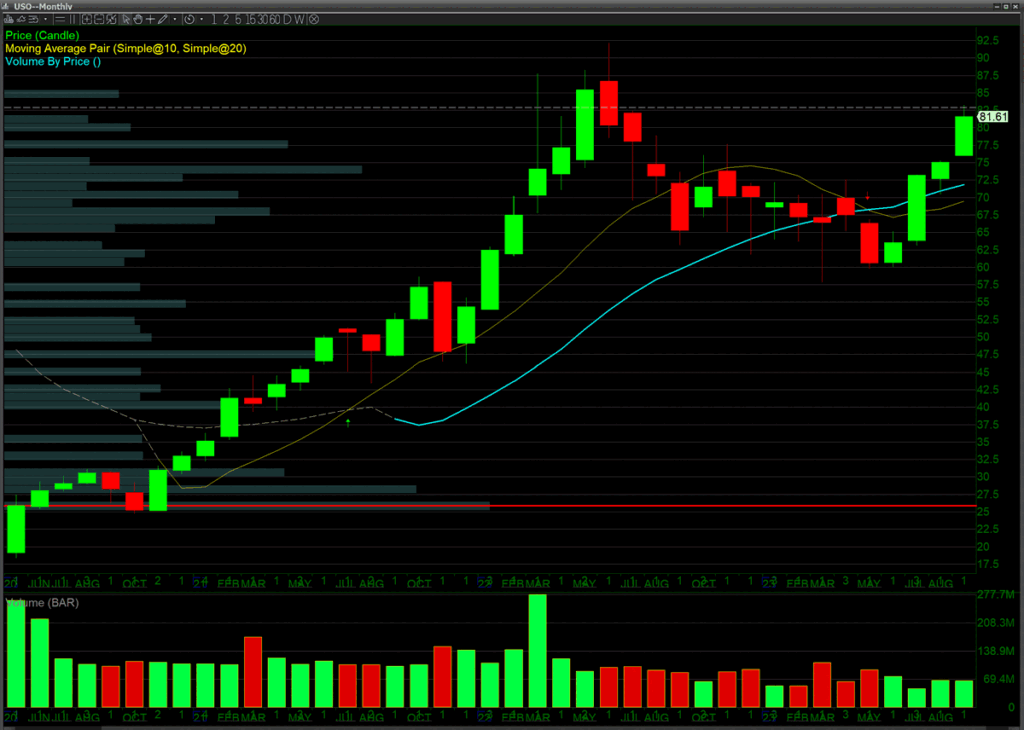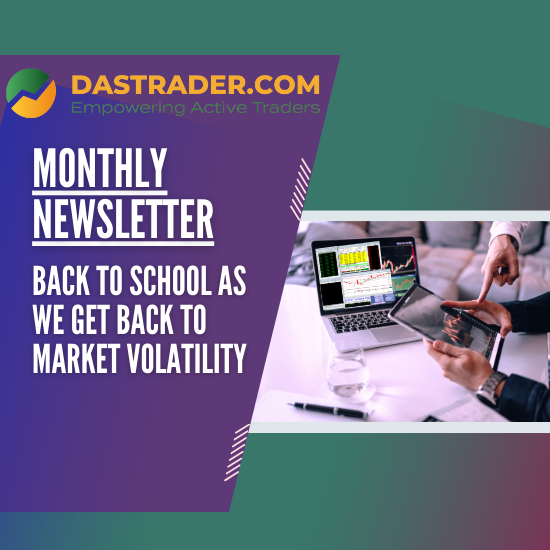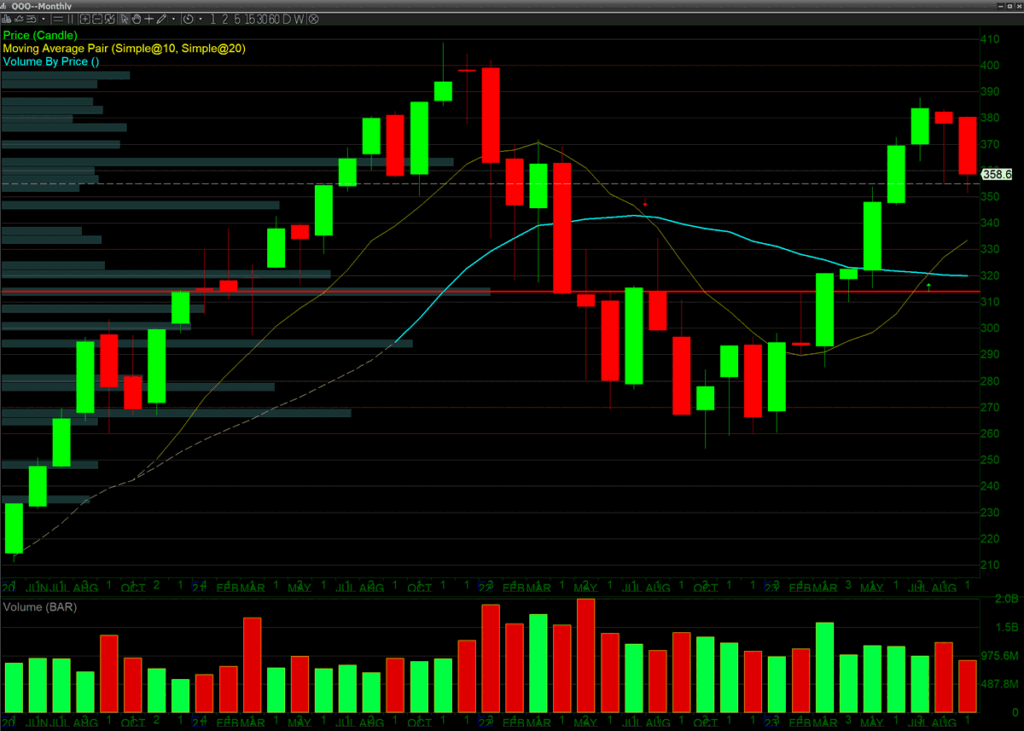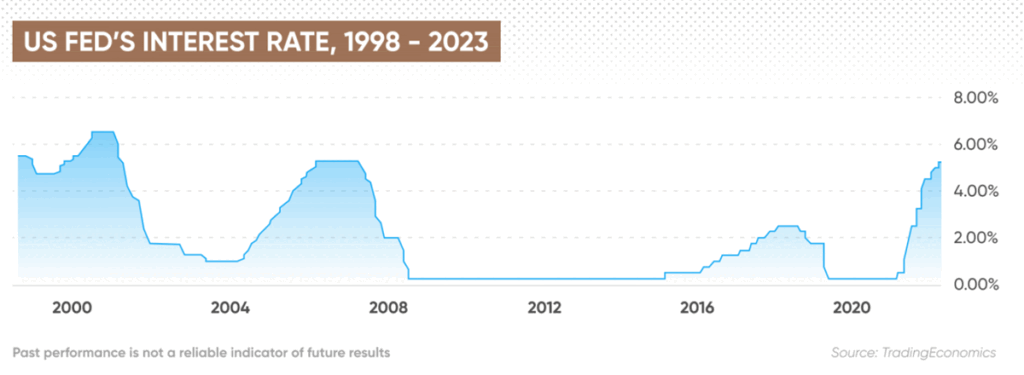As another month comes to a close, market volatility has increased as expected. This time, the volatility is being caused by a trifecta of concerns that have re-emerged on the “wall of worry” for the markets.
The chart above of the $QQQ, which is the ETF that represents the Nasdaq 100, shows two red high-wave candlesticks on the monthly. A high-wave candlestick pattern is a type of pattern similar to a doji in that it indicates a wide range and volatility with uncertainty. This means that both months were bearish and volatile.

$USO has been rising for four months back to the prior highs; this was caused by a cut in production by Saudi Arabia.
Inflation, Government Shutdown and the Fed
The first item of concern is related to inflation, which has largely been caused by the increase in the price of oil which started to increase in June after the Kingdom of Saudi Arabia cut oil supply, thereby reducing production. This cut in supply has driven up oil prices, but of course, it did not do so immediately. Oil prices have continued to climb month after month since June and now oil is trading over $90 per barrel, and some see oil prices going above $100 per barrel. Other forecasts can even see oil going above $150 per barrel. Nobody knows how high oil will actually go, but oil is a major concern when it comes to inflation. Oil is considered to be the prime commodity. Meaning that its price is factored into everything that gets bought or sold in the economy as oil is used to transport products and materials to their final destination.
The next item of concern is the continuing reemergence of a government shutdown. Yet again, only a few months after the last government shutdown was narrowly averted, we are facing the prospects of a US federal government shutdown. This time, over budgetary concerns and budgetary arguments. However, the primary driving force is the current immigration crisis. Many conservatives have made solving the immigration crisis a key requirement to passing a federal budget.
The last part of the trifecta of concern is one that we have discussed quite a few times before; the Federal Reserve has indicated that they expect interest rates to stay higher longer as inflation persists. The last meeting of the Federal Reserve did not include a rate hike. However, the Fed did indicate that this was just a pause, and that future rate hikes should be expected, and certainly that there would not be a reduction of interest rates in the near term. This has led some well-known market figures such as Jamie Dimon of JP Morgan Chase to say that we could be seeing interest rates as high as 7% in the near future. No one is certain how high interest rates will go, but talk of a soft landing is becoming less and less.
In summary, expect increased market volatility as we go into the end of 2023 and certainly expect increased volatility for most of 2024 as it is an election year, and generally presidential election years have increased volatility. Between the trifecta of concerns mentioned above and the fact that we are headed into an election year, the expectation is extreme uncertainty in the market.
#1 Best Trader Competition – Fall 2023
We are proud to announce the #1 Best Trader Competition will be returning again this fall! Be sure to sign-up on our #1 Best Trader website to get informed on all of the details for the fall 2023 competition!
Written by Michael DiGioia, Director of Education
Mike is available for One-on-One Coaching. Learn More







